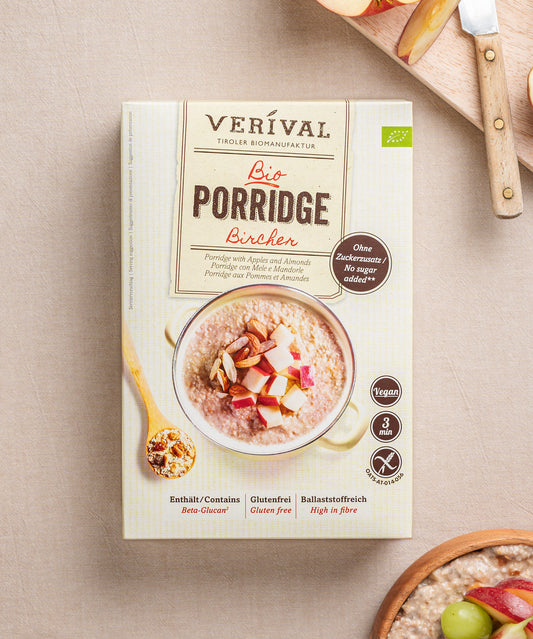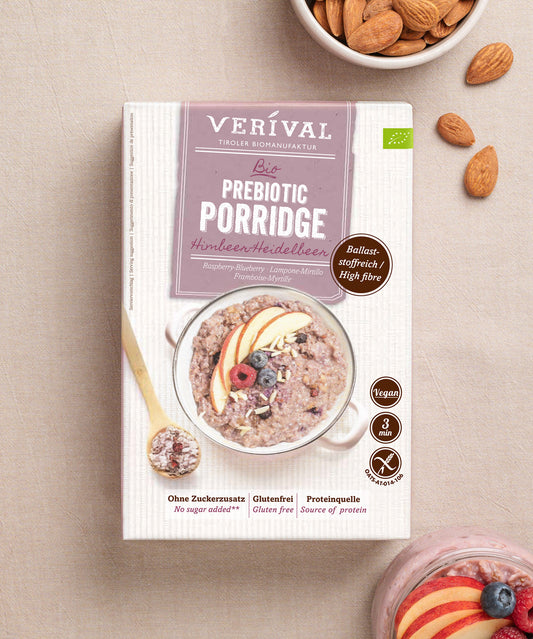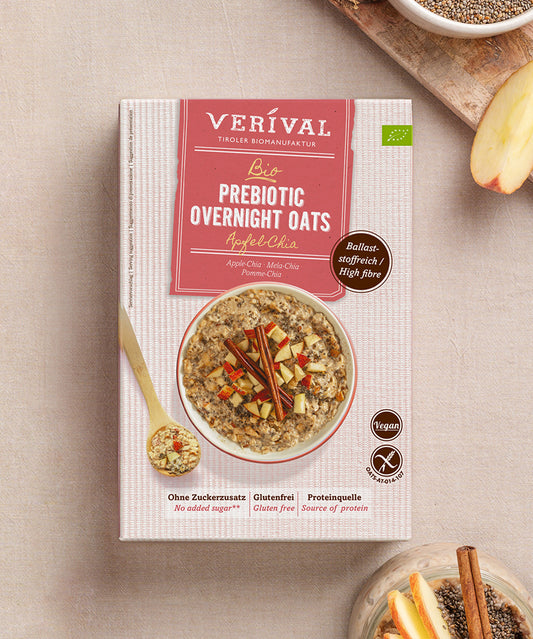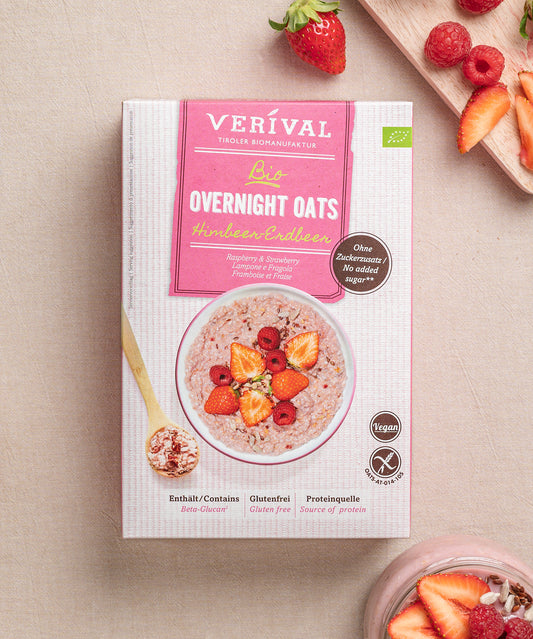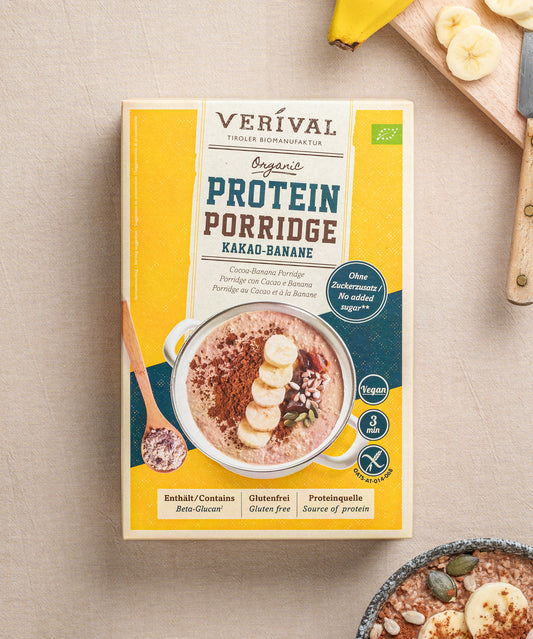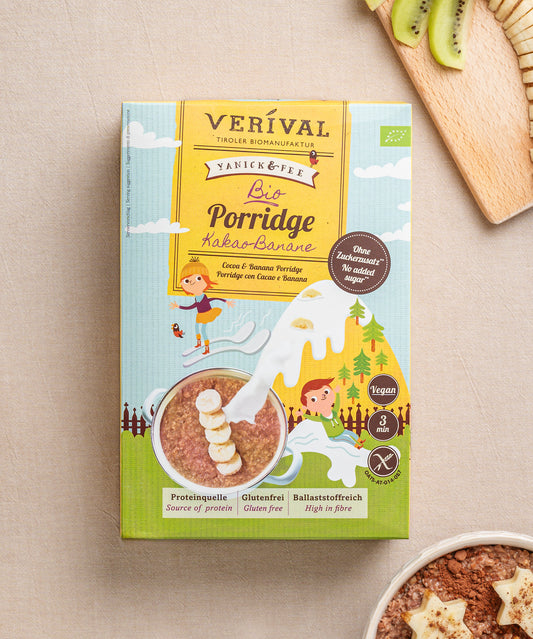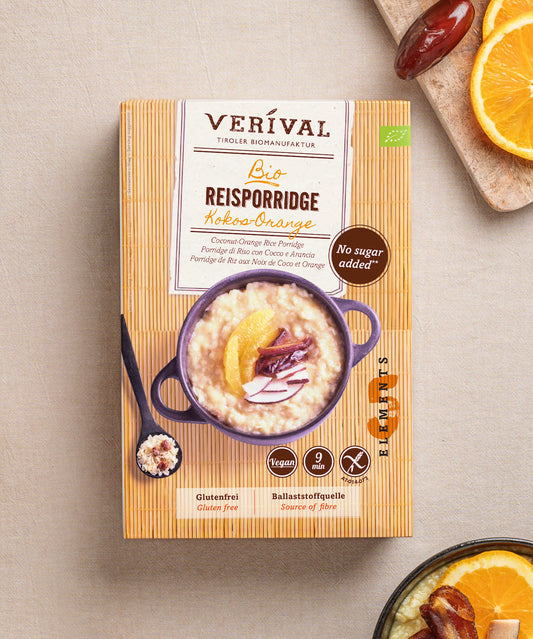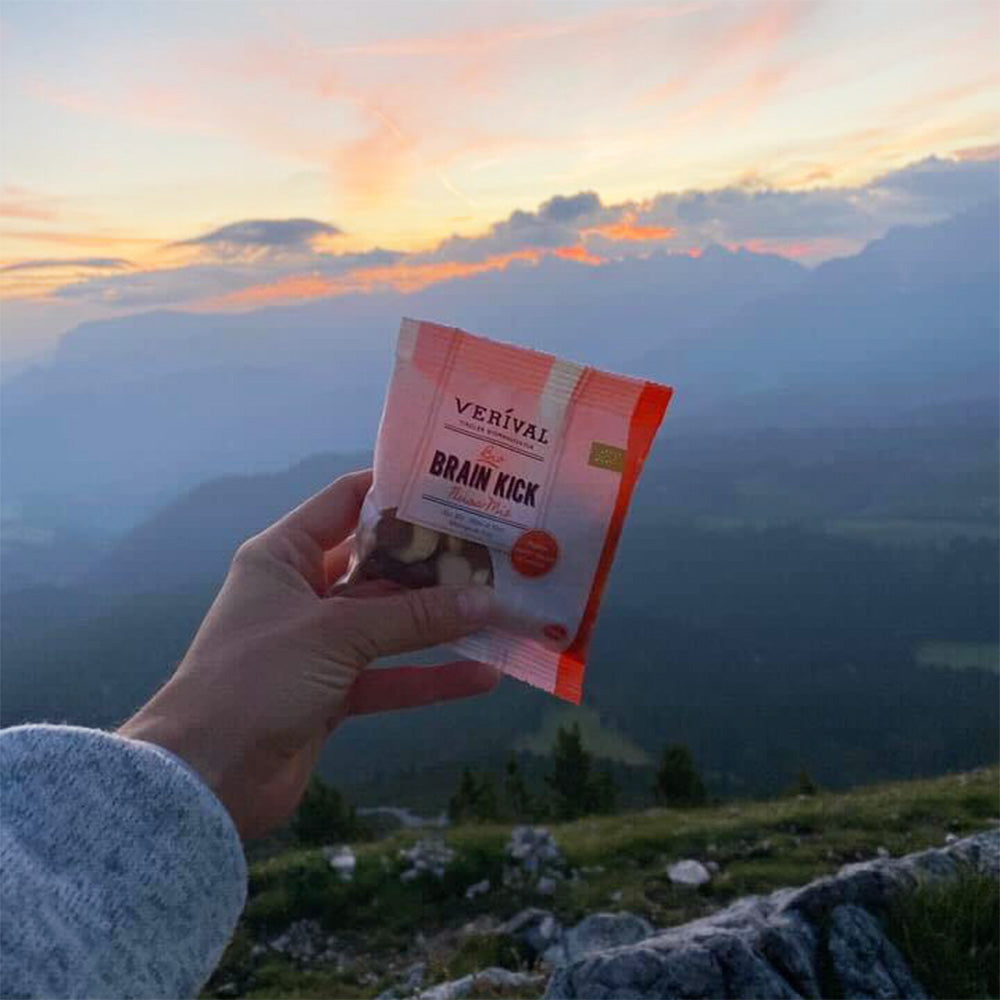Legumes are true all-rounders. Peas, chickpeas, white beans and lentils, as well as soybeans and peanuts, are all legumes. These are plant seeds that ripen in a pod. The lesser-known lupins, for example, thrive in the cooler climate of Germany. Not only do legumes contain countless healthy nutrients, they can also be used in a variety of ways. They are therefore extremely popular with vegetarians and vegans as part of a healthy diet, for example as a source of plant-based protein. Read on to find out why you should include legumes in your daily diet.
Plant-based protein-packed breakfast – discover it now
What exactly are pulses?
Legumes are, strictly speaking, the seeds of legumes, also known as leguminous plants. They are usually available in air-dried form (in which case they need to be soaked in water before preparation – and the soaking water always needs to be poured off) in supermarkets or online shops. But they can also be purchased in precooked form in cans.
Legumes are particularly essential in plant-based diets. However, a sufficient intake of legumes is also recommended for those who eat a mixed diet. The reason for this is the wide range of nutrients they contain. Legumes are a rich source of high-quality protein, healthy fiber, and a wide variety of minerals and phytochemicals.
The health benefits of legumes
It is recommended that we eat legumes regularly, ideally up to three times a day. But what is the reason for this recommendation?
The answer to this question is simple. That's because legumes are extremely healthy. Many varieties contain at least 20 grams of protein per 100 grams. And that's without any negative by-products such as unhealthy fatty acids. That's because most legumes are low in fat.
They also contain plenty of fiber, which ensures healthy intestinal flora and keeps you and your body fit. The considerable amount of minerals should also be emphasized. Iron, zinc, magnesium, potassium, phosphorus and manganese, for example, are present in significant quantities. But healthy vitamins, such as those in the B complex, can also be found in legumes. In addition to the B vitamins mentioned, legumes are also a source of folic acid.
In terms of health, these nutrients help to maintain stable blood sugar levels, thus protecting against diabetes and cravings. But legumes are also considered a natural way to prevent common diseases such as cardiovascular problems and cancer.
If you want to eat a vegetarian diet, legumes are for you!
Are fresh or dried legumes a suitable source of plant-based protein?
If you follow a plant-based diet or do a lot of sport, you will pay particular attention to the protein content of the food you eat. If you take a look at the protein content of legumes, it quickly becomes clear that they are an excellent source of protein.
In nutrition science, the quality of a protein source is usually expressed in terms of its biological value. This reflects the composition of the protein, which is defined by the amino acids it contains.
Protein-rich breakfast variety from Verival
Some legumes, such as soybeans, already have a high biological value on their own. If you combine these plant-based superfoods in a clever way, their biological value and thus their quality can be increased even further. A mixture of beans and corn, such as that found in Mexican chili, is roughly equivalent to a classic chicken egg, which in turn is the basis for biological value.
With the exception of green peas, sugar snap peas and peanuts, you should not eat legumes raw, as they can be harmful to your body when raw (e.g. due to the presence of lectins).
You should know these varieties
Admittedly, not everyone can really get to like legumes. But it doesn't have to be that way. The variety couldn't be greater. If you don't like beans, you might like lentils. If you don't like lentils, you might like chickpeas. They can be used to make delicious hummus, for example. That's why it's worth taking a closer look at the numerous types of legumes.
Get your healthy snack from legumes – Green Protein Waffles
Beans
There are beans like sand by the sea. Compared to the latter, however, they all taste excellent. Below you will find a small selection of some of the most important representatives of beans:
- Soybeans (they are particularly known for their use as a meat substitute)
- Kidney beans
- Black beans
- White beans
- Green beans
- Mung beans
- Pinto beans
- Field beans
What makes the different types of legumes special is how they are used in the kitchen. Soybeans, for example, are an excellent ingredient in homemade plant-based drinks, while kidney beans can be used to make delicious cakes.
Lentils
Lentils are among the legumes with the highest nutrient density. But it's not just their healthy nutrients that make them so popular. Depending on the variety, they are extremely easy and quick to prepare. Red and green lentils, for example, are ready to eat in just 10 minutes.
However, you should plan a little more time for larger lentils, such as plate lentils. Which variety you use depends on the dish you want to make. Beluga lentils, for example, are perfect for salads, while red lentils are ideal for meat-free sauces.
Peas
Chickpeas are the absolute all-rounders in the plant-based kitchen. They are not only suitable as a crunchy snack from the oven, but can also serve as a base for cakes or plant-based patties.
The situation is similar with classic peas. However, green peas stand out in contrast to chickpeas due to their well-known sweet taste. Nevertheless, they are versatile. Whether as an addition to rice or mashed potatoes, as a sweet flavor in chili sin carne or as a basis for delicious spreads – sugar peas are suitable for everything. The sugar snap peas also taste delicious – they don't really need a long cooking time, as they should only be blanched briefly.
How to incorporate legumes into your daily routine
Incorporating legumes into your daily routine is something that many people find difficult at first. But it just takes a little imagination. The following suggestions are intended as inspiration – there are no limits to your creativity. Just try something out. You'll see that there's a lot more you can do with legumes than you originally thought 😉
Legumes at breakfast
Admittedly, integrating legumes into breakfast sounds unusual at first. But it is not at all. If you look a little beyond your own geographical borders, you will quickly see that legumes are very popular at breakfast.
In Great Britain, for example, beans are a staple of the classic English breakfast. In Japan, too, people like to eat a hot breakfast – soybeans are found in the traditional miso soup in the form of miso and tofu. In India, on the other hand, lentils are traditionally eaten for breakfast – processed into lentil flour in the morning cake.
You can also easily make a sweet lentil porridge with lentils. To do this, bring the lentils to the boil together with the oats and milk. If you like, you can also add a mashed banana. Leave your lentil porridge to cook over a medium heat for about 20 minutes until it has a creamy consistency.
Discover the variety of porridges from Verival here.
As you can see, you can eat a healthy portion of legumes at breakfast time. If you don't want to spend time preparing legumes in the morning, you can also opt for our Verival Green Protein Waffles. These are an excellent low-carbohydrate, high-protein alternative to bread.
Legumes as snacks
It's unbelievable but true. Legumes can be a healthy alternative to high-fat snacks. For example, you can simply marinate chickpeas to taste and bake them in the oven. This makes them nice and crispy, perfect as a healthy snack when watching TV or playing games with friends.
But legumes are also suitable as snacks in the form of cakes or other pastries. For example, beans are an excellent base for vegan brownies.
Conclusion
Legumes are extremely healthy due to their high fiber and protein content and even seem to protect against typical widespread diseases. Integrating plant-based superfoods into your daily routine may take some time, but once you've got the hang of it, they can incredibly enrich your dishes.
Whether at breakfast, as a snack or as a classic addition to lunch or dinner, whether in soup or as a sandwich spread, legumes are true all-rounders and should not be missing from your diet. So, we hope you enjoy trying them out and bon appétit 😉
One more thing: legumes contain purines. Therefore, you should avoid them if you suffer from gout. Your doctor can advise you on this.







